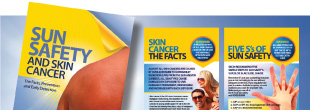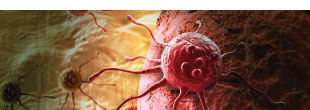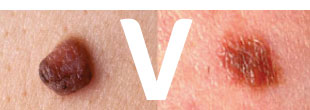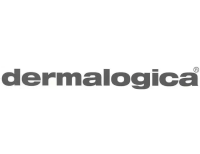
RAISING AWARENESS THROUGH EDUCATION
PROMOTING PREVENTION & EARLY DETECTION CAMPAIGNING FOR CHANGE
SKCIN: THE KAREN CLIFFORD SKIN CANCER CHARITY / REGISTERED CHARITY: 1150048

WE NEED YOUR HELP! PLEASE HELP US TO STOP SKIN CANCER TAKING MORE LIVES. WE ARE HUGELY GRATEFUL FOR YOUR SUPPORT.
How To Check Your Skin
Sun Safety & Prevention
Over 80% of all skin cancers are preventable by following
just 5 simple sun safe measures: Slip, Slop, Slap, Slide, Shade...

A child’s delicate skin can burn within minutes causing
irreparable damage - learn how to protect them...

Do you know your facts about Sunscreen? Which to buy, what
SPF, UVA protection, how much to apply, when to reapply...

Did you know that the snow reflects up to 80% of sun
burning UV radiation! Learn about winter sun protection...

Is your child’s school or pre-school Sun Safe?
Make sure children are protected during school hours...

Do you work outdoors? Is your workplace Sun Safe?
Find out more about Sun Safety in the Workplace...
How to check your skin for skin cancer
Skin cancers found and removed early are almost always curable. Finding them early can also prevent disfigurement and in more serious cases can be lifesaving. Skcin recommend you check your skin thoroughly once a month, although if you have previously suffered with skin cancer you may well be required to check more frequently.
Should you notice anything suspicious, or feel worried or concerned about any potential abnormality, you should consult your GP or dermatologist as soon as possible.
If you are checking your skin for the first time:
If you are checking your skin for the first time it is important to do a bit of swatting up on the various types of skin cancers and what to look out for - looking for something new to appear is all well and
good, providing you haven't missed something that is already there.
See Types of skin cancer or how to spot skin cancer for information on the various types of skin cancers and pre-cancerous skin lesions. If you are worried about moles and want to learn more about normal moles versus abnormal (atypical) moles click here >
The best way to begin regularly checking your skin is to learn where your moles, birthmarks, and other marks are and their usual look and feel so that you can detect any changes over time.
Generally speaking if you notice any type of mole, lump, persistent sore or patch that is changing shape, growing, won't heal, bleeding, crusting, itching or flaking - get it checked out!
Top tips for a thorough self examination
- An ideal time to check your skin is after a bath or shower
- Make sure you check your skin in a room with plenty of light
- Use a full-length mirror and a hand-held mirror
- Check yourself thoroughly from head to toe:
- Look at your face, neck, ears, and scalp.
- When checking your scalp use a comb or a blow dryer to move your hair so that you can see better, or ask a relative or friend to check through your hair as it can be hard to check by yourself.
- Look at the front and back of your body in the mirror. Again asking someone to help you check hard to see places like your back can be helpful.
- Make sure you thoroughly check your entire body.
- Remember to raise your arms and check your left and right sides.
- Remember to check the following areas where signs and symptoms can go unnoticed:
- Fingernails, and the palms of your hands.
- The genital area, between your buttocks and under breasts.
- Your feet, including your toenails, your soles, and the spaces between your toes.
Basic warning signs to detect:
- A growth that increases in size and appears pearly, translucent, tan, brown, black, or multi-coloured
- A mole (that looks different from your other moles)
- A mole, birthmark, beauty mark, or any brown spot that:
- Varies in colour
- Increases in size or thickness
- Changes in texture
- Is irregular in outline
- Is bigger than 6mm or 1/4", the size of a pencil eraser
- Appears after age 21
- A new red or darker colour flaky patch that may be a little raised
- A new flesh-coloured firm bump
- An open sore that doesn't heal
- A spot or sore that continues to itch, hurt, crust, scab, erode, or bleed
For images and further guidance on what to look out for see how to spot skin cancer
Children and skin checking:
It is important to check your children's skin for signs of change too, naturally moles will develop up until their teens at which point they should learn how to self examine their skin and be aware of what to look out for. Skin cancer is far less common in children, but melanoma can strike at a young age and can be fatal, so it is particularly important to keep an eye on your children's moles, especially if they appear to have one or more atypical mole. Click here for further information on normal moles versus atypical moles >
Keeping a record of your examinations:
By checking your skin regularly, you'll learn what is normal for you. However it can be very helpful to record your findings and the dates of your skin exams as it is hard to remember so much detail. Recording your findings on a body map for example could mean the difference between spotting something early or something going unnoticed, so a worth while exercise.
You can download a body map here to record your findings and keep a concise record of your self examinations.
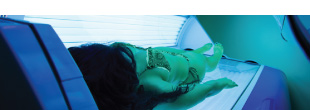
out the truth and misconceptions
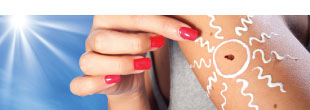
what you should be looking for...
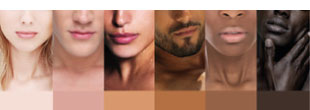
of associated risk and protection...
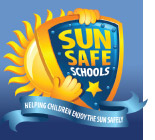
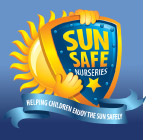
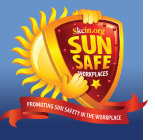
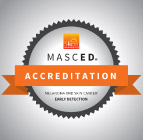
Articles of interest
AHEAD OF NATIONAL SKIN CANCER AWARENESS MONTH IN MAY, BRITISH BEAUTY BACKS VAT BURN CAMPAIGN AMIDST SKIN CANC...
26th Apr 2024 2:16pm
SUNAK WARNED MELANOMA CASES WILL INCREASE WITHOUT GOVERNMENT ACTION
Skcin are proud to support SNP MP Amy Callaghan with her on-going VAT Burn Campaign as she...
28th Nov 2023 12:20pm
SKCIN are delighted to highlight a positive initiative by New College Lanarkshire in Motherwell. The college is supporti...
22nd Jun 2023 1:05pm
Innovative, global healthcare company Sanofi are officially the UK’s first employer to become a Skin Cancer SOS Accred...
24th May 2022 9:06am
Antonia, who is a passionate activist and campaigner of raising awareness for accessing safe beauty and aesthetic ...
27th Jan 2022 6:39pm
